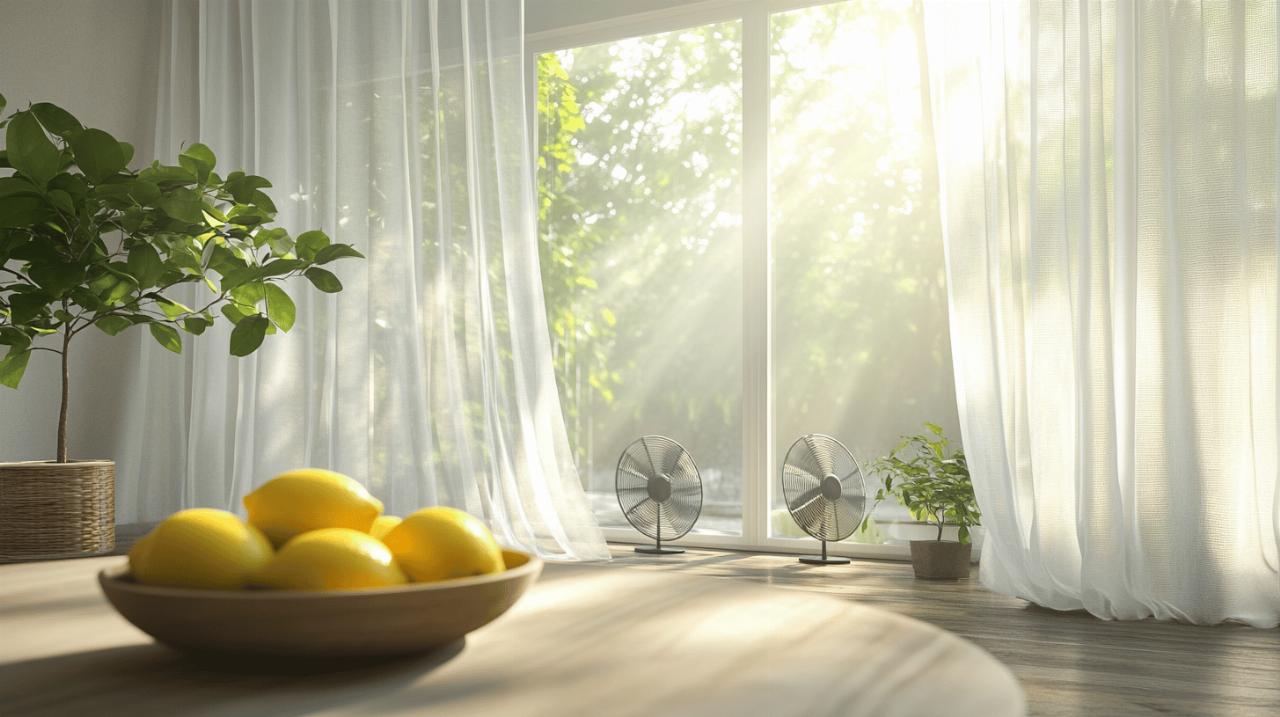As summer temperatures rise, finding effective ways to keep your home cool becomes essential for comfort and well-being. While air conditioning provides instant relief, it's not always available or economical for everyone. Fortunately, there are numerous practical and cost-effective alternatives to beat the heat and maintain a comfortable living environment during the hottest months of the year.
Smart fan strategies
Fans are one of the most accessible and energy-efficient tools for managing summer heat. According to Casa Jedo experts, running a fan for an entire day costs between 15p and 31p, making it significantly more economical than air conditioning, which can cost between £4.84 – £6 for 24 hours of continuous use.
Creating effective cross-ventilation patterns
The key to maximizing fan effectiveness lies in strategic placement to create airflow throughout your home. Position fans near windows on opposite sides of your house to facilitate cross-ventilation. This technique works particularly well during cooler periods like early mornings or evenings. For apartments, placing a fan near an open window can help draw in cooler outside air while pushing warm indoor air out.
Best Fan Types and Placement for Maximum Cooling
Different fan types serve various cooling purposes. Box fans work well in windows, while ceiling fans should rotate counterclockwise in summer to create a cooling downdraft. For personal relief, place a bowl of ice in front of a fan to create a makeshift cooling system. However, be aware that fans primarily cool people, not rooms, by evaporating perspiration from the skin. When temperatures exceed 35°C, fans may become less effective and could potentially circulate hot air instead.
Managing sunlight and heat entry
A substantial amount of unwanted heat enters homes through windows and poorly insulated areas. Implementing strategies to block heat before it enters your living space can significantly reduce indoor temperatures.
Window covering techniques for heat reduction
Windows act as heat magnifiers, especially those facing the sun. Close curtains, blinds, or shutters during the sunniest and hottest parts of the day, particularly on the south and west-facing windows. Light-colored, reflective window coverings work best as they bounce sunlight away from your home. Consider external solutions like awnings or outdoor blinds, which can be even more effective since they block heat before it reaches the glass.
Choosing the Right Materials for Insulation
Proper insulation keeps heat out during summer just as it keeps warmth in during winter. Check for gaps around doors and windows where hot air might infiltrate, and seal them with weather stripping or caulk. For longer-term solutions, consider installing reflective insulation in your attic or upgrading to energy-efficient windows with heat-reflective coatings. These investments improve thermal comfort year-round while reducing energy costs.
Cooling your living space naturally
Working with natural temperature variations throughout the day can help maintain a cooler home environment without mechanical cooling systems.
Morning and evening window routines
Develop a routine of opening windows during cooler parts of the day and closing them when temperatures rise. Early mornings, evenings, and nights typically offer the coolest temperatures. Open windows on opposite sides of your home to create cross-ventilation, allowing cool breezes to flow through. Remember to close windows and blinds before the day heats up to trap the cool air inside.
Whole-house fan systems and setup
A whole-house fan offers a more powerful version of natural ventilation. Typically installed in the ceiling between the living space and the attic, these systems pull cooler outdoor air in through open windows and exhaust hot air through the attic and roof vents. This method can be particularly effective in the evening when outdoor temperatures drop. Whole-house fans consume less electricity than air conditioners while potentially cooling your entire home.
Heat-free cooking methods
 Cooking generates significant heat that can raise your home's temperature. During hot weather, adjusting your culinary approach can help maintain a cooler environment.
Cooking generates significant heat that can raise your home's temperature. During hot weather, adjusting your culinary approach can help maintain a cooler environment.
No-cook meal ideas for hot days
Embrace meals that require minimal or no cooking. Fresh salads, sandwiches, cold soups like gazpacho, and fruit platters are refreshing options that keep your kitchen cool. Consider preparing ingredients in advance during cooler parts of the day, or batch-cooking during milder weather and storing meals for reheating in a microwave, which generates less ambient heat than conventional ovens.
Outdoor cooking options to keep heat outside
When hot meals are desired, take the cooking process outside. Grilling not only keeps heat outdoors but also reduces energy consumption within your home. Portable induction cooktops used on patios or balconies offer another alternative. For apartments without outdoor access, consider using smaller appliances like slow cookers, which generate less heat than conventional ovens, or pressure cookers, which reduce cooking time.
Personal cooling strategies
Sometimes the most effective approach is cooling yourself rather than the entire space around you. Personal cooling methods can provide immediate relief from heat discomfort.
Cold showers and other body cooling methods
Tepid showers can effectively lower body temperature without causing the shock of very cold water, which can actually increase body heat as your system works to warm up. Apply cold compresses to pulse points like wrists, neck, elbows, groin, ankles, and behind the knees where blood vessels are close to the skin. Cotton clothing with loose fits facilitates air circulation around your body, enhancing cooling through natural evaporation.
Hydration plans for heat management
Staying well-hydrated is crucial for regulating body temperature. Drink water consistently throughout the day rather than waiting until you feel thirsty. Infuse water with cucumber, mint, or citrus for a refreshing alternative to plain water. Avoid excessive alcohol and caffeine, which can contribute to dehydration. Consuming water-rich foods like watermelon, cucumber, and lettuce provides additional hydration while requiring minimal preparation.
Alternative cooling environments
When home cooling strategies aren't sufficient, seeking cooler locations can provide necessary relief during extreme heat.
Finding public spaces with climate control
Public buildings like libraries, shopping centers, movie theaters, and museums typically maintain comfortable temperatures with air conditioning systems. Many cities now designate official cool spaces or cooling centers during heat waves, specifically intended for public relief. These locations offer not only temperature control but also opportunities for social engagement and activities while staying cool.
Creating cool zones within your home
If cooling your entire home proves challenging, focus on creating one or two cool rooms where family members can gather during the hottest hours. Basements naturally stay cooler due to their below-ground location. For above-ground spaces, choose rooms on the north side of your home or those shaded by trees. Concentrate your cooling efforts in these designated areas using fans, window coverings, and possibly a small portable air conditioner if available.





